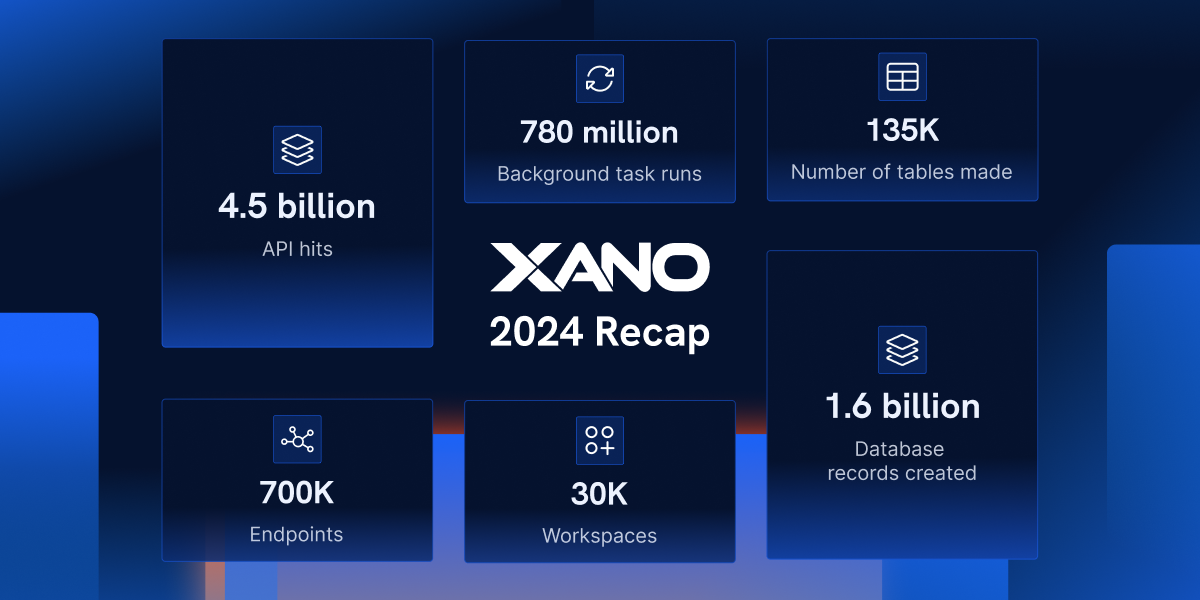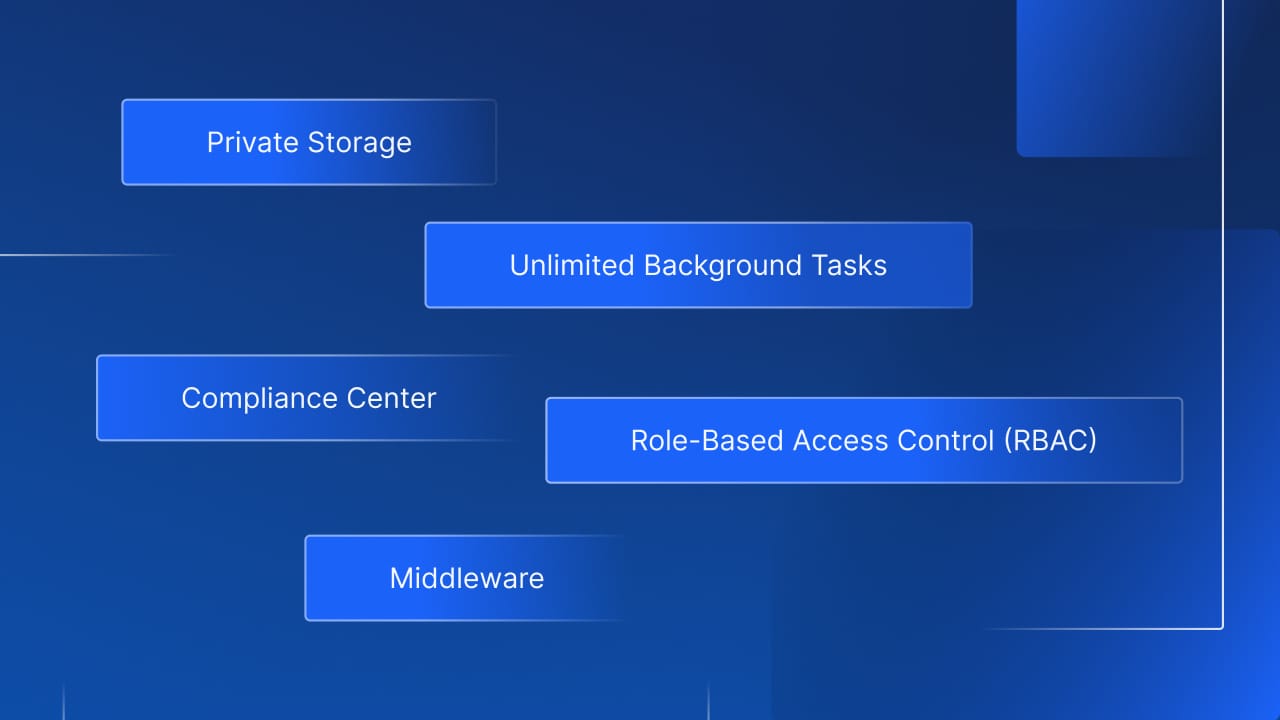Low Code / No Code Development Trend 2022
By Xano | March 16, 2021

While low code / no code development platforms have been around for years, it took a long time for many developers to warm up to them. There was a lot of doubt that these sorts of platforms would be powerful enough to meet the needs of an IT department. No code or low code platforms were seen more as something for younger businesses with limited resources rather than a viable tool for the average tech company.
Now, public perception of no code and low code platforms has changed. This in part due to technological advancements and improvements, but it is also connected to larger shifts in how we work. With more and more companies relying on low code and no code options to streamline important processes, professional developers are seeing the value in these services.
As they become increasingly impressive, no code/low code platforms are changing the way businesses operate and are expected to take off in 2021. Below, we will go over some low code/no code development trends we expect to see in the coming years.
How Do Low Code / No Code Development Platforms Work?
Tech workers are always on the lookout for ways to speed up the development process. Even a slight change to a website or mobile application – like adding a new search tool or updating security profile – requires a lot of coding on the backend. This can put undue stress on developer teams who are already bogged down with a lot of other duties.
This is where low code and no code development platforms step in. They are an easy fix to streamline a lot of processes associated with application development. Some or all of backend development is automated through low code/no code platforms. This means your team can make small changes as needed without needing hours or sometimes days to work out the coding on the backend.
Low code/no code platforms are sort of similar to sites like Squaresapce or WordPress, which allow you to build a website without needing to code. You can add everything from a navigation toolbar to a picture to an “About Me” section without having to manually enter the necessary code.

The ability to build apps on low code or no code platforms saves companies tremendous time and human resources. While developers were initially wary of no code platforms, recent technological advancements combined with a rising need for quicker development means the no code/low code revolution is about to begin.
Why Low Code/ No Code Development Will Grow In 2021
Developers Are Warming Up To Low Code/No Code Platforms
While there was once a subtle stigma against relying on low code/no code platforms, this is changing quickly. For a long time, developers doubted these platforms would meet their company’s needs. Automating certain backend processes seemed like a “too good to be true” sort of scenario.
In 2020, a quick shift to work-from-home meant a massive shift in business processes across the board. We will talk more about this in more detail below, but developers ended up scrambling to update systems. This meant third party no code/low code platforms were more or less a necessity to manage the change.
While no code apps were nothing new, developers were suddenly forced to use them. This made many companies realize their value, making them more open to outsourcing certain backend duties to low code/no code platforms. Developers collectively recognizing the true capabilities of these platforms mean the no code/low code industry is poised to take off.
Work-From-Home Is A Chance For No Code To Thrive
By the time summer rolled around in 2020, it was becoming increasingly apparent that the work-from-home world was here to stay – and this was not just because of the pandemic. Many companies were finding workers were more productive at home, and that they saved money on office supplies and office space by allowing for remote work.
This paradigm shift required many fast-paced changes in our technology. Low code/no code apps provide a quick and easy fix to many problems caused by a fast shift to remote offices. Developers who were already slammed with lengthy to-do lists were then tasked with digitizing pen and paper processes.
Given fast solutions were needed, many developers began relying on low code or no code platforms for automation. This is only the beginning too. A predicted 500 million more apps will be created in the coming years to meet the new needs of the remote office. No code and low code platforms are primed to take off to meet that need.
From remote background checks to e-signature solutions, developers will need to create many new applications to manage remote workers.
Low Code / No Code Development Merges With Collaboration Platforms
Now that teams are working remotely, more and more collaboration platforms are needed. Platforms like Microsoft Team are becoming increasingly important in the business world. Businesses also want data-driven insights on performance to help them identify areas for improvement. Microsoft Dataverse for Teams is also gaining traction.
Low code/no code platforms help developers create their own versions of these platforms to meet the specific needs of their companies. Systems like Slack and Google analytics are helpful tools, but they of course do not account for the specific needs of every single company – especially niche industries.
Microsoft Teams and Microsoft Dataverse for Teams have both become popular as they allow users to build and edit custom applications, workflows, and data analysis tools specified for an individual company. This takes a lot of work off developers’ hands, saving you time and money while allowing you to find ways to improve performance overall.
These kinds of built-in, low code or no code data and communication platforms allow developers to work from a template and quickly build applications tailored to their company’s needs. As more and more communication and analysis is done remotely, there is going to be a growing demand for low code/no code platforms to help optimize communication and process improvement from a distance.
Low Code / No Code Platform Help With Web Apps
With more and more consumers staying indoors, there has been a rise in use of web applications. Rather than shopping in a brick and mortar store, for examples, users are more likely to browse products online possibly through an application. In fact, nearly 52% of all internet traffic is mobile.

Many companies primarily relied on foot traffic, so they had little use for a mobile application or progressive web application for their company. Now, nearly every type of company needs to have a strong online presence optimized for a mobile experience. There simply are not enough software engineers to go around, with many companies facing serious hiring shortages when expanding their development teams.
This is where low code or no code platforms come into play. Again, they are similar to sites like WordPress – which allow anyone to make a website without coding experience. No code and low code platforms take a lot of work off your dev team’s hands and allow even amateurs to help create mobile apps and optimize your website for a mobile audience.
Low Code / No Code Development Trends: The Bottom Line
2021 is going to be the year low code and no code platforms take off. While they have been around for a long time, the fast-paced shift to a work-from-home environment makes these technologies more important than ever.
Looking to add no code platforms to your business? At Xano, our No Code backend app builder platform lets anyone craft a project backend with our user-friendly features and infrastructure. Sign up here to get started.

















